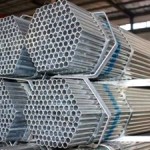 Beaverton, Oregon – NIKE, Inc. (NYSE:NKE) released its FY10-11 Sustainable Business Performance Summary on May 3, which introduces its new targets and outlines its progress against key business, labor and environmental goals. The company also discusses the key challenges and its strategy for its work ahead, demonstrating its commitment to a more transparent and sustainable future.
Beaverton, Oregon – NIKE, Inc. (NYSE:NKE) released its FY10-11 Sustainable Business Performance Summary on May 3, which introduces its new targets and outlines its progress against key business, labor and environmental goals. The company also discusses the key challenges and its strategy for its work ahead, demonstrating its commitment to a more transparent and sustainable future.
Nike’s long-term strategic vision – to decouple profitable growth from constrained resources – is underscored by new targets and commitments, including a company-wide commitment to further integrate sustainability principles into its innovation processes, governance and portfolios. The work ahead is structured in two levels: continuous improvement targets against key impact areas to “make today better” and broader innovation commitments to “design the future” that establish how Nike is approaching longer-term change.
“Nike is known globally for our innovative performance products and sustainability has now increasingly become core to our business approach,” said NIKE, Inc. President & CEO, Mark Parker. “We have continuously invested in reducing our environmental and social impacts within our own business and supply chain, and have made substantial gains over the last decade. We know we cannot achieve our bold sustainability goals simply by delivering incremental improvements. We need to deliver innovations that rapidly evolve the way things are done at Nike, in our industry and throughout business.”
Nike also unveiled its new factory rating system, the Manufacturing Index, which looks comprehensively at a contract factory’s total performance and includes a deeper look at how a factory approaches sustainability. This Index elevates labor and environmental performance alongside traditional supply chain measures of quality, cost and on-time delivery.
Within the overall Manufacturing Index, the company has developed an innovative Sourcing & Manufacturing Sustainability Index (SMSI), which assesses contract factory performance on sustainability measures including measures of lean, environmental performance (including water, energy and carbon, and waste), health and safety, and labor management factors. After more than two years of development work and concluding a successful pilot program, the SMSI is currently being rolled out across NIKE, Inc.’s global supply chain.
Nike’s report focuses heavily on the role of innovation, transparency and collaboration in addressing sustainability issues. The Summary shows that Nike achieved or made significant progress against most of its previous targets, including waste reduction in footwear manufacturing, utilizing its Considered Design Index guidelines in product design and implementing Human Resource Management training programs in contracted factories.
In some areas, including the reduction of excessive overtime at contract factories, progress was slower than targeted. Nike also changed its approach to some targets, including carbon emissions, based on deeper understanding of the challenges and to improve alignment with business strategy. Incremental progress against several targets was a key driver for Nike to redesign its factory evaluation and sourcing criteria to improve performance in the long-term.
Nike worked with Business for Social Responsibility to engage a panel of external reviewers with expertise across broad areas, including representatives from Non-Governmental Organizations and academia to business, students and open data advocates, to assess its reporting and engage in discussion on its new set of sustainability targets. Massachusetts Institute of Technology Professor Richard Locke, whose current research is focused on improving labor and environmental conditions in global supply chains, was one of the reviewers and said the process had been well-organized, rigorous and transparent.
“I have been impressed by Nike’s willingness to engage in constructive debate over what is feasible and what is aspirational,” Locke said. “This is a company that takes a leadership position and has clearly learned the value of partnership and that collaboration is a business opportunity, not a risk.”
Some of the key results against the last goals Nike set include:
- The number of factory audits showing serious, repeated violations has remained low, at about 5 percent over the past five years. The number of contract factories with unknown conditions has decreased from 48 percent in FY09 to 8 percent in FY11, due in large part to increased monitoring against NIKE, Inc.’s Affiliate base.
- Human Resource Management training was conducted in 79 percent of focus contract factories (76 of 98), which covered 94 percent of footwear volume, 43 percent of apparel volume.
- CO2 emissions from contract footwear factories used to source NIKE brand product were down 6 percent from FY08-FY11, despite a 20 percent increase in production.
- 97 percent of NIKE brand footwear achieved a baseline level or better on Nike’s Considered Index.
“Since we began setting targets years ago, we’ve learned the greatest opportunity to drive change is in the areas where we have the most impact,” said NIKE, Inc. Vice President of Sustainable Business & Innovation, Hannah Jones. “We know our materials create our greatest environmental impact. We control the design so this is where we began to focus when we rolled out our Considered Design ethos in 2009. We are now applying this same discipline and rigor in designing sustainability into the way we source and manufacture our products.”
Nike first began reporting its environmental and social performance around key impact areas including waste, water, energy, toxics, climate and labor in 2001. With improvements in measurement and data, and achievement of some targets, the company continues to reexamine its targets and approach as it has learned more about root causes of issues and where it can bring about the greatest change.












